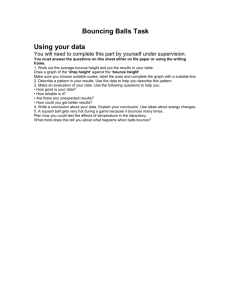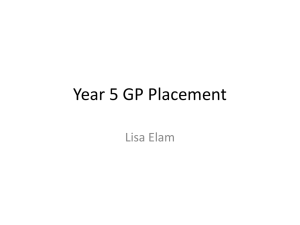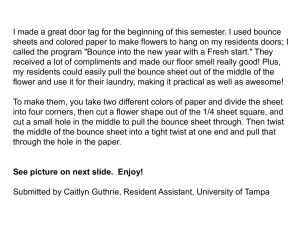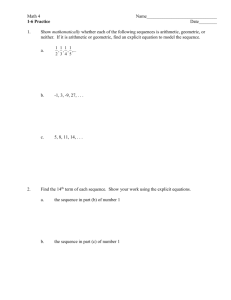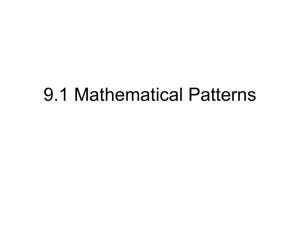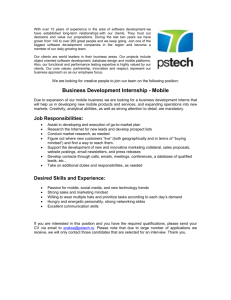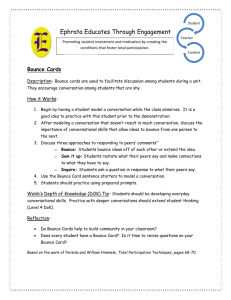Empowering the Learner
advertisement
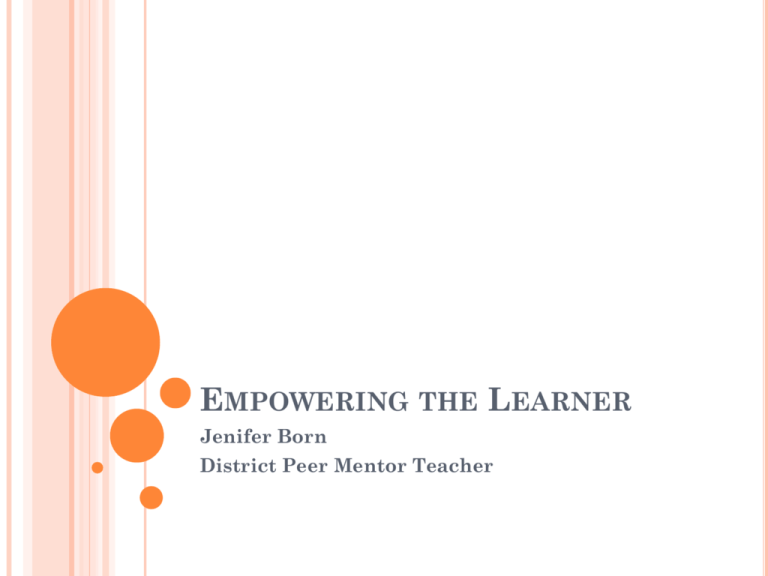
EMPOWERING THE LEARNER Jenifer Born District Peer Mentor Teacher DESIRED OUTCOMES Develop understanding of brain research as it relates to learning Investigate proper use of feedback Explore ideas for involving students Explore practices in which students monitor their own learning AGREEMENTS Everyone participates; no one dominates Stay focused and take responsibility for your learning Be positive Use technology respectfully RATIONALE The new appraisal system focuses strongly on a student-centered, student-led classroom. Research supports this type of classroom learning environment because it empowers students and positively impacts student achievement. TRENDS OF DISTINGUISHED EVIDENCE Dimension 2: Learning Environment Student-centered learning, student to student interaction, student leadership, student metacognition. Every student is challenged, accommodated, respected. Proactive classroom management. Students actively engaged in classroom and in use of technology. TRENDS OF DISTINGUISHED EVIDENCE Dimension 3: Instructional Delivery and Facilitation Rich engagement with a variety of checks for understanding. Higher order thinking with student-led discussion and choice. Extensive strategies with innovative materials. TRENDS OF DISTINGUISHED EVIDENCE Dimension 4: Assessment Consciously plans and uses a multitude of data to progress monitor. Students contribute, analyze and make changes to their learning paths. Content, process, and product differentiated efficiently. TRENDS OF DISTINGUISHED EVIDENCE Dimension 6: Relationship with Students Proactively seeks out a multitude of methods to build positive, genuine relationships with ALL students. FRAMEWORK FOR LEARNING Teach your students about the brain and learning Teach your students about a growth mindset for learning PRISCILLA VAIL, AUTHOR OF EMOTION: THE ON/OFF SWITCH FOR LEARNING “Faced with frustration, despair, worry, sadness, or shame, kids lose access to their own memory, reasoning, and the capacity to make connections.” VAIL FURTHER STATES… “The emotional brain, the limbic system, has the power to open or close access to learning, memory, and the ability to make novel connections.” GROWTH MINDSET Dweck (2006) states, “One way to create a growth mindset culture for learning is by providing the right kinds of praise and encouragement.” http://www.mindsetworks.com/professionaldevelopment-and-tools/ INVOLVEMENT Shifting from a teacher-led classroom to a studentcentered classroom requires a significant change in thinking. IN MY CLASSROOM… How might you give students a more significant role in your classroom? Think/Pair… Use Bounce cards as sentence stems for responses. BOUNCE CARD Bounce: Take what your classmate(s) said and bounce an idea off of it. For example, you can start your sentences with… “That reminds me of…” “I agree, because…” “True. Another example is when…” “That’s a great point…” SUM IT UP Sum it up: Rephrase what was just said in a shorter version. For example, you can start your sentences with… “I hear you saying that…” “So, if I understand you correctly…” “I like how you said…” INQUIRE Inquire: Understand what your classmates mean by asking them questions. For example, you can start your questions with… “Can you tell me more about that?” “I’m not sure I understand...” “I see your point, but what about….?” “Have you thought about…?” PONDER THIS… People always say, “There is no such thing as constructive criticism.” My question: Is there “constructive” feedback? DEBATE TEAM CAROUSEL: IS THERE “CONSTRUCTIVE” FEEDBACK? 1. Give your opinion and explain 2. Add a supporting argument. your rationale. Record your opinion Read your classmate’s response. In and explain your reason for it. this box, add another reason that would support your classmate’s response. 3. Add an opposing argument. In this box, record a reason that might be used to argue against what is written in boxes #1 and #2. 4. Add your “two cents.” Read what is written in the three boxes . Add your opinion and your reason for it in this box. SUGGESTED PRACTICES FOR HIGH QUALITY FEEDBACK Note: Giving feedback to students lets the students know that you know them well and that you care about their effort and their progress. Connect to clear learning targets that teachers have shared with students. Begin with the strengths in the student work under discussion. Discuss questions or concerns about the work. SUGGESTED PRACTICES FOR HIGH QUALITY FEEDBACK, CONTINUED Provide direction on how to address these questions and concerns. Be individualized to each student. Be delivered in student-accessible language and forms. Arrive when learners can still use it. ANOTHER TYPE OF FEEDBACK TO CONSIDER Giving feedback about effort helps students to better understand that perseverance and persistence pays off. READ AND DO Read the article, “Keeping the Destination in Mind.” Find three key points Rank the three key points Summarize the top ranked point Share with a partner Be prepared to share CREATING THE OPPORTUNITY TO LEARN Boykin and Noguera (2012) stated, “Evidence has mounted that learners’ goals can significantly affect academic functioning in ways that can address the achievement gap.” DATA NOTEBOOKS Use of Data Notebooks is recommended strategy for improved student performance and supported by Baldrige. http://www.montgomeryschoolsmd.org/info/baldri ge/staff/addresources.shtm http://www.pendercountyschools.net/cms/One.asp x?portalId=3727476&pageId=11081042 STUDENT-LED CONFERENCING There are many forms available online that you might consider when planning for student-led conferencing. Share video Discuss THANK YOU FOR YOUR PARTICIPATION!
